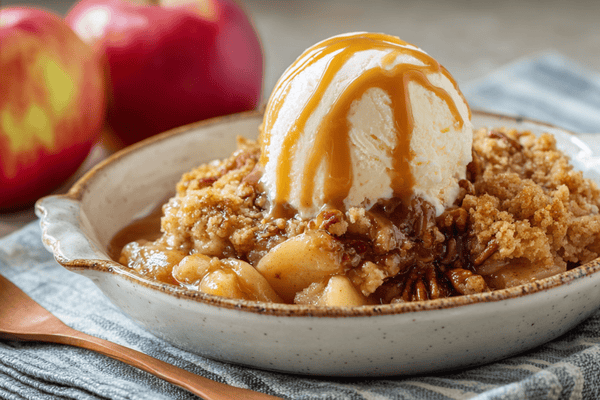Quick Answer
What is gyoza? Gyoza are Japanese dumplings with a thin wrapper filled with ground meat and/or vegetables. Originally from China (known as jiaozi), they were introduced to Japan after WWII.
Types of gyoza:
- Yaki Gyoza: Pan-fried with crispy bottom and steamed top (most common)
- Age Gyoza: Deep-fried for all-over crispiness
- Mushi Gyoza: Steamed for a softer, healthier option
- Sui Gyoza: Boiled in water or broth
Nutrition: A typical serving of 6 pan-fried gyoza contains approximately 350-400 calories. Steamed or boiled versions are healthier options.
Making at home: Gyoza can be easily made at home with basic ingredients: ground pork, cabbage, green onions, garlic, ginger, wrappers, and seasonings. They freeze well for future meals.
If you've ever browsed a Japanese restaurant menu or explored East Asian cuisine, you've likely encountered gyoza – delicious dumplings filled with meat, vegetables, or a combination of both. This guide will introduce you to their history, varieties, preparation methods, and cultural significance.
Origins and History of Gyoza

Gyoza is the Japanese adaptation of Chinese jiaozi dumplings. While Japanese cuisine has embraced gyoza as its own, these dumplings originated in China and were introduced to Japan in the mid-20th century, primarily following World War II when Japanese soldiers returned from China with knowledge of local cuisine.
The Chinese jiaozi have a much longer history, with archaeological evidence suggesting versions of filled dumplings date back at least 1,800 years. According to Chinese culinary tradition, a physician named Zhang Zhongjing is credited with creating an early version of jiaozi during the Eastern Han Dynasty (25-220 CE). As the story goes, he created crescent-shaped dumplings filled with warming ingredients and medicinal herbs to help treat frostbitten ears in his village during a particularly harsh winter.
In Chinese culture, jiaozi became an important part of New Year celebrations due to their resemblance to ancient Chinese currency (yuanbao) – their shape symbolizing wealth and prosperity. Today, both jiaozi in China and gyoza in Japan remain popular dishes with distinctive regional variations and cooking methods.
Types of Gyoza
Japanese cuisine has developed several distinct preparation methods for gyoza, each creating a different texture and eating experience:
Yaki Gyoza (Pan-Fried)

Yaki gyoza is the most common preparation in Japan. These dumplings are first pan-fried on one side until crispy, then water is added to the pan and the pan is covered, allowing the dumplings to steam until the filling is fully cooked. The result is a dumpling with a perfectly crispy bottom and tender top – similar to the Chinese "potsticker" technique. The distinctive golden-brown crust on the bottom provides a satisfying textural contrast to the chewy wrapper.
Age Gyoza (Deep-Fried)

Age gyoza refers to deep-fried dumplings. Unlike yaki gyoza, these are completely immersed in hot oil, resulting in a thoroughly crispy exterior. The wrappers puff up slightly and turn golden-brown all over, creating a crunchy texture that encases the savory filling. This style is less common in traditional Japanese restaurants but is popular as a variation in casual dining and street food settings.
Mushi Gyoza (Steamed)

For a lighter option, mushi gyoza are prepared in a bamboo steamer without any oil. The result is a tender, slightly translucent dumpling with a soft, chewy texture. This preparation method allows the true flavors of the filling to shine through, without the additional flavor that comes from frying. This style is similar to Chinese xiaolongbao or traditional dim sum dumplings.
Sui Gyoza (Boiled)

Sui gyoza are boiled in water or broth, creating a tender, slippery texture. These dumplings are often served in soup or with a dipping sauce. The boiling method yields a different mouthfeel compared to the other preparation styles – the wrapper becomes uniform in texture throughout, with no crispy elements. This preparation is closer to Chinese wonton soup dumplings in texture.
Nutritional Considerations
The nutritional profile of gyoza varies significantly depending on the preparation method and filling ingredients. Here's a general comparison:
- Steamed (Mushi) and Boiled (Sui) Gyoza: Generally lower in calories and fat, making them the healthier options. A typical serving of 6 steamed gyoza contains approximately 250-300 calories.
- Pan-Fried (Yaki) Gyoza: Moderate in calories due to the limited oil used. A serving of 6 typically contains approximately 350-400 calories.
- Deep-Fried (Age) Gyoza: Highest in calories and fat due to the oil absorption during frying. A serving of 6 may contain 450-500 calories or more.
The filling ingredients also impact nutritional value. Traditional pork and cabbage fillings provide protein, while vegetable fillings offer additional nutrients with fewer calories. Most gyoza contain common allergens including wheat (in the wrapper) and potentially soy (in the filling or dipping sauce).
As with many foods, gyoza can be enjoyed as part of a balanced diet when consumed in moderation, particularly if paired with vegetable-rich side dishes.
For more nutritional insights about Japanese cuisine, explore The Secrets of the Healthy Japanese Diet, which explains how traditional Japanese eating patterns contribute to overall wellbeing.
Gyoza in Japanese Culture
In Japan, gyoza has become a beloved dish found in various dining establishments, from specialized gyoza restaurants to ramen shops and izakaya (Japanese pubs). While available throughout the country, certain regions have developed particular fame for their gyoza.
Utsunomiya, located north of Tokyo in Tochigi Prefecture, is widely recognized as the "Gyoza Capital" of Japan. The city hosts an annual gyoza festival and boasts over 200 gyoza restaurants. Each establishment offers its own take on the dish, with subtle variations in fillings, folding techniques, and dipping sauces. Hamamatsu in Shizuoka Prefecture is another city known for its distinctive gyoza culture, featuring a style where the dumplings are arranged in a circle and pan-fried together.
As of 2023, you can typically expect to pay between 300 and 600 yen (approximately $2-$4 USD) for a plate of six gyoza in Japan, making them an affordable and satisfying option for many diners.
If you're interested in exploring other aspects of Japanese food culture, consider Stocking a Japanese Pantry: Sake and Stocking a Japanese Pantry: Soy Sauce for essentials that complement gyoza perfectly.
Making Gyoza at Home
Contrary to what many believe, making gyoza at home is accessible for most home cooks. While mastering the pleating technique takes practice, even beginners can create delicious dumplings with some patience.
Basic Gyoza Recipe
Ingredients (makes approximately 30 dumplings):
For the filling:
- 250g (1/2 pound) ground pork
- 2 cups finely chopped cabbage
- 2 green onions, finely chopped
- 2 cloves garlic, minced
- 1 teaspoon grated fresh ginger
- 1 tablespoon soy sauce
- 1 teaspoon sesame oil
- 1/2 teaspoon salt
- 1/4 teaspoon white pepper
For assembly and cooking:
- 30 round gyoza wrappers (available in Asian grocery stores)
- 2 tablespoons vegetable oil
- 1/4 cup water
- Small bowl of water for sealing
For dipping sauce:
- 1 part rice vinegar
- 1 part soy sauce
- Optional: chili oil, minced garlic, or sesame oil to taste
Basic Method:
- Prepare the filling: Combine all filling ingredients in a bowl and mix thoroughly.
-
Fill and fold dumplings:
- Place a gyoza wrapper in your palm
- Add approximately 1 teaspoon of filling to the center
- Moisten the wrapper edge with water
- Fold in half to create a half-moon shape
- Create 4-6 pleats along the edge to seal (or simply press edges together)
-
Cook (for yaki gyoza/potstickers):
- Heat oil in a non-stick pan over medium heat
- Arrange gyoza in a circle, flat side down
- Fry until bottoms are golden-brown (2-3 minutes)
- Add water and immediately cover with a lid
- Steam until water evaporates (about 3-4 minutes)
- Remove lid and cook for another minute to crisp up the bottom
- Serve: Transfer to a plate and serve with dipping sauce.
For a professional-level technique for cutting vegetables for your gyoza filling, check out The Art of Vegetable Cutting: A Comprehensive Guide, which provides detailed instructions on achieving the perfect consistency for your ingredients.
Freezing Homemade Gyoza
Gyoza freeze exceptionally well, making them perfect for batch preparation:
- Arrange uncooked gyoza on a baking sheet lined with parchment paper, ensuring they don't touch.
- Freeze until solid (about 1-2 hours).
- Transfer to airtight containers or freezer bags.
- Frozen gyoza will maintain quality for up to three months.
- Cook directly from frozen – no need to thaw – simply add an extra minute to the steaming time.
Enjoying Gyoza in Restaurants

When dining out, gyoza are typically served as an appetizer or side dish, though some specialty restaurants offer them as the main attraction. A standard serving usually consists of 6-8 dumplings, often accompanied by a dipping sauce of soy sauce, rice vinegar, and sometimes chili oil or garlic.
In traditional Japanese restaurants, gyoza pair excellently with ramen, rice dishes, or as part of an izakaya spread with beer or sake. The dipping sauce is usually mixed at the table according to personal preference, allowing diners to adjust the balance of flavors to their liking.
To fully appreciate the authentic gyoza experience, you might want to learn about traditional Japanese dining etiquette. For insights into proper dining customs, see What Are the Dos and Don'ts When Eating a Japanese Meal for helpful guidance on cultural practices that enhance your dining experience.
Final Thoughts
Gyoza represents a perfect example of how culinary traditions evolve and adapt as they cross cultural boundaries. What began as Chinese jiaozi has become a distinctive element of Japanese cuisine, with its own preparation methods and cultural significance.
Whether you're sampling regional varieties in Japan, ordering from your local Japanese restaurant, or attempting to make them at home, gyoza offers a delicious entry point into East Asian dumplings. Their combination of crispy and tender textures, savory filling, and versatility in preparation methods ensures their continued popularity around the world.
To elevate your gyoza preparation at home, quality kitchen tools make a significant difference. A good knife is essential for achieving the fine mince required for gyoza fillings. For proper knife selection, refer to Tips to Improve Your Knife Skills and How to Improve Your Knife Skills and Chop, Slice, and Dice Like a Pro, which can help you master the precise cutting techniques needed for perfect gyoza fillings.
If you're interested in exploring more Japanese cuisine, consider starting with Getting Started with Japanese Recipes: Katsu or A Taste of Japan: Ramen – both dishes that pair wonderfully with gyoza for a complete Japanese meal experience.
Sources:
- Kushner, B. (2012). "Slurp! A Social and Culinary History of Ramen"
- Rath, E. (2016). "Japan's Cuisines: Food, Place and Identity"
- Chen, Y. (2014). "A History of Chinese Dumplings"
- Japan National Tourism Organization (2023). "Regional Food Guide"
This article was last updated in May 2023 with current pricing information and nutritional data.




